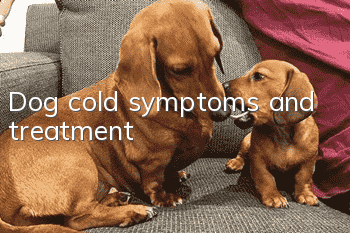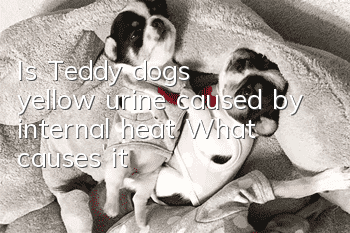Dog cold symptoms and treatment

Colds are also called "cold" and "cold". Generally, we divide them into two types: "common" and "flu". They are respiratory diseases caused by a variety of germs and are high-incidence common diseases. In different seasons, the types of germs that cause colds are different. In terms of the widest and fastest spread, it is influenza. A sneeze or cough of an infected pet dog can transmit the germs to the dog through splashing saliva. In the breeding farm, This situation is extremely common. So what are the symptoms of a cold and how to treat it?
Dog cold symptoms:
1. Poor energy, slumping, and liking to lie down; (this seems to be a common symptom of all discomforts)
2. Watery nose; (note that it is watery, not purulent or colored)
3. Sneezing and coughing; (coughing is very similar to canine distemper, canine parainfluenza, and bronchitis) You can also learn more about whether dogs sneezing with a cold can infect people
4. Conjunctival congestion, tearing, and loss of appetite; (this is also similar to canine distemper)
5. The body temperature rises, usually 39~40°C; (the normal body temperature measured by rectum for adult dogs is 37.5~38.5°C, and for puppies, 38~39°C)
Differences between similar illnesses and colds:
1. Rhinitis: The body temperature does not rise, the nasal mucosa is red and swollen, and the nasal fluid is pus-like or bloody;
2. Sinusitis: The dog’s mouth and nose have a bad smell, the sinuses are swollen and painful, and the body temperature is low;
3. Canine distemper: The body temperature rises to 40~41°C, and the fever is biphasic (i.e., the fever starts for a few days, the body temperature slowly drops, and then the fever returns after about 7 days), and there is sticky secretion in the eyes;
4. Canine parainfluenza: contagious, with severe cough, red and swollen tonsils, and swollen nasal discharge;
5. Bronchitis: severe short cough, dry cough.
Among the diseases mentioned above, canine mild and canine parainfluenza are both contagious and pathogenic, and their symptoms are obviously different from those of colds. If you find symptoms of these two diseases in your dog, you must go to the hospital immediately. Fortunately, these two diseases are preventable in dogs' annual vaccinations, so the chances of adult dogs getting sick are not very high.
Treatment methods for dog colds:
1. Cold granules: I have not found the specific dosage, so I can only give you my experience value. If your dog is very large, over 80 pounds, you can follow the adult dosage. ICurrently, the dog at home weighs 30 pounds. He usually drinks half a bag each time, twice a day. If your dog is very small, a small spoonful of it, such as a Chihuahua, is enough. Anyway, for a mild medicine like cold granules, a little more won’t be a big problem.
2. Antiviral oral liquid: Using my dog as a reference, take one pill at a time, twice a day.
3. Amoxicillin: 10~20 mg/kg (body weight), 2~3 times a day, for 5 days.
Notes
When it comes to the causes of colds in dogs, they are mostly caused by cold wind, long-term nutritional imbalance, excessive fatigue, or mouth and nose diseases. If ignored, frequent colds can even cause complications of various diseases and endanger health. In addition, during a cold period, Wangyi recommends that you should not let your dog do heavy exercise and should mainly rest. Speaking of the reasons why dogs catch colds, they are mostly caused by cold wind, long-term nutritional imbalance, excessive fatigue, or mouth and nose diseases. If ignored, frequent colds can even cause complications of various diseases and endanger health. In addition, during a cold period, Wangyi recommends that you should not let your dog do heavy exercise and should mainly rest.
- What's the matter with dogs eating grass?
- How about super believable? Is deworming effective for dogs?
- How to train a Greyhound to stare at a light? Tips for training a Greyhound to stare at a light!
- What should you pay attention to when vaccinating your dog? Precautions for dog vaccination!
- What should I do if my Greenland dog vomits after eating too much?
- Come and see how many of these pet-raising misunderstandings you have fallen into?
- How to cool down your dog in summer, teach you how to make your own dog ice cream!
- Can dogs drink Huoxiang Zhengqi water if they have heat stroke?
- What are the solutions to dogs’ bad mouth?
- How many days does it take for a newborn puppy to walk?



